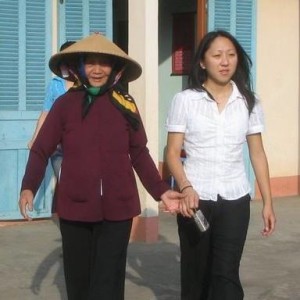As the Executive Director of the Southeast Asia Resource Action Center (SEARAC) and a member of the Diverse Elders Coalition (DEC), I was honored to be invited to the 2015 White House Conference on Aging. Knowing that the conference only takes place once every ten years, I felt a large sense of responsibility as one of a small group of participants selected to be in the room that day as President Obama helped focus the nation’s attention on the elders in our communities. Many have been observing the anniversaries of important milestones for aging policy that are taking place this year: the 50th anniversary of the Older Americans Act on July 14, the 50th anniversary of Medicare and Medicaid on July 30, and the 80th anniversary of Social Security on August 14, just to name a few. But for me, 2015 offers another milestone as we mark the 40th year of the Southeast Asian refugee resettlement to the United States that started April 1975 at the end of the Vietnam War. Thinking about how far we’ve come as a family that left Vietnam on boats, to myself as a daughter honoring her elders at the White House was a particularly powerful and humbling experience.

Quyen and her grandmother
Being in that room, connecting with my fellow members of the Diverse Elders Coalition and other advocates on aging issues from across the country, made me realize that we have an opportunity as a nation to look at aging through an equity lens. We can and must acknowledge that aging in America is often hard enough, and that for elders who face compounded vulnerabilities (such as those caused by the effects of racism, homophobia, and trauma from war), it is even harder. For Southeast Asians, even though the percentage of elders is lower than that of other Asian American groups (7-18% for Southeast Asian Americans as opposed to 20% for Asian Americans generally), they experience many challenges to a more severe degree. Where 9.5% of the U.S. population lives below the poverty line, for Southeast Asian Americans, that number ranges from 16-20%. For Southeast Asian Americans as a refugee community, 97% of elders are foreign-born and over 85% have limited English proficiency. Understanding these numbers and the realities behind them will be important for a truly inclusive agenda for aging policy.
For the communities I work for, too much of the agenda at the White House Conference on Aging was removed from the lived realities of our elders. The discussion of what “financial planning” looks like failed to provide real solutions for the many constituents we serve who live in poverty. While Social Security reform is important, it doesn’t help the many community members I work with who have not been able to access traditional jobs that offer Social Security benefits. For SEARAC and for the DEC, these are the realities that we bring to aging policy discussions.
At the Congressional Briefing the DEC hosted the following day, I was able to make these issues real and by talking about my grandmother. For her, life in America contrasted with life in Vietnam fell far too short. The issues she faced while living with my family in San Jose — socially isolated because of inadequate transportation and lack of pedestrian friendly communities, limited access to fresh fruits and vegetables, and dissonance from her grandkids who struggled to communicate with her in Vietnamese — are issues that we seek to address through legislation like the Older Americans Act, which was celebrating its 50th anniversary the day of our Briefing. Unfortunately, the unique needs of people like my grandmother are still not sufficiently addressed by current law and policy. My grandma passed away last December in Vietnam surrounded by love and family. It is her story and others like hers that we bring to fulfill our responsibility to fight for equity where elders can age with community, love, and dignity.
The opinions expressed in this article are those of the author and do not necessarily reflect those of the Diverse Elders Coalition.

